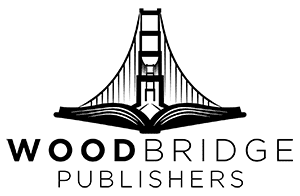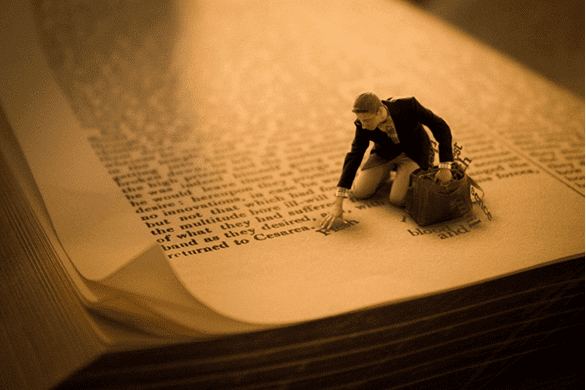As an author, you feel accomplished and an achiever when you finish your final draft. But the fact remains that the written work needs improvement, and that is where editing comes in. Book editing involves various stages, and each stage has its unique purpose and result. There are a few different types of editing that authors should be aware of: copy editing, line editing, substantive editing, and developmental editing.
In this blog post, we will focus on developmental editing, what it is, and why it is so important. We will also explore the differences between developmental editing and other editing types, including copy editing and line editing. Finally, we will discuss what makes developmental editing unique and highlight some factors to consider when hiring a developmental editor.
Types of Editing
Copy editing and developmental editing are two distinct stages in the editing process, each with its own focus and purpose.
Copy Editing
Copy editing is typically the final stage of the editing process, done after the developmental editing and substantive editing stages. Its primary objective is to ensure accuracy, consistency, and adherence to grammatical rules and style guidelines.
During copy editing, the editor carefully examines the manuscript line by line, checking for errors in grammar, punctuation, spelling, and syntax. They correct any mistakes and ensure that the text follows the conventions of Standard English.
Copy editing also involves reviewing and enforcing consistent formatting throughout the manuscript. The editor checks for consistent capitalization, hyphenation, italics, and other formatting elements. They may also ensure the manuscript adheres to specific style guides, such as APA or Chicago Manual.
The goal of copy editing is to produce a polished and error-free manuscript that is ready for publication. It focuses on the technical aspects of the writing, ensuring clarity and correctness in language usage.
Developmental Editing
Developmental editing, on the other hand, takes place much earlier in the editing process. It focuses on the overall structure, content, and quality of the manuscript rather than the detailed language and grammar.
A developmental editor looks at the manuscript as a whole, examining its core components such as plot, characters, narrative structure, pacing, and thematic elements. They provide feedback and suggestions to strengthen these elements and improve the overall reader experience.
In developmental editing, the editor may ask questions like:
- Is the central theme conveyed throughout the book?
- Is the plot engaging and does it have a logical progression?
- Are the characters well-developed and relatable to readers?
- Are there sufficient character arcs to create depth and growth?
- Can sections or scenes be cut or revised to improve the overall flow and impact?
The developmental editor helps the author shape and refine the manuscript, ensuring the story is compelling, coherent, and resonates with readers. It is a collaborative process where the editor offers guidance, constructive feedback, and suggestions to enhance the storytelling elements of the manuscript.
To put it simply? copy editing is the final stage of editing that focuses on grammar, punctuation, spelling, and formatting to ensure accuracy and consistency. Developmental editing, on the other hand, occurs earlier in the process and addresses the broader aspects of the manuscript, such as structure, plot, characters, and narrative flow. Both copy editing and developmental editing play essential roles in creating a polished and compelling manuscript, but they serve different purposes and require different skill sets from the editor.
Line Editing vs Copy Editing
Line editing and copy editing are both important stages in the editing process, but they focus on different aspects of the manuscript.
Line Editing
Line editing, also known as stylistic editing or language editing, dives deep into the language and style of the book. It aims to enhance the overall readability and flow of the prose. Line editing focuses on sentence-level improvements, ensuring that each sentence is clear, concise, and effectively conveys the author’s intended meaning.
During line editing, the editor pays attention to sentence structure, ensuring it is grammatically correct and properly constructed. They analyze the syntax, eliminating awkward or confusing phrasing and suggesting alternatives to improve the overall clarity and coherence of the writing.
Line editing also addresses tone, voice, and word choice issues. The editor ensures that the language matches the intended tone of the book, maintaining consistency throughout. They may suggest adjustments to improve the author’s voice, making it more distinct and engaging. Additionally, the editor examines word choices, looking for opportunities to enhance the language, eliminate redundancies, and make the writing more precise and impactful.
Copy Editing
Copy editing, often considered the final stage of the editing process, focuses on polishing the text to ensure accuracy, consistency, and adherence to established style guidelines. It primarily deals with correcting errors in grammar, punctuation, spelling, and usage. Copy editing ensures that the manuscript adheres to the rules of standard English and maintains consistency in style and formatting.
During copy editing, the editor meticulously reviews the manuscript, correcting any grammatical errors, such as subject-verb agreement, verb tense consistency, or misuse of punctuation marks. They also address spelling and typographical errors, ensuring the text is error-free.
In addition to these language-related issues, copy editing also involves checking for consistency in style and formatting. The editor ensures the manuscript follows the appropriate style guide or the author’s preferred style choices. They pay attention to details such as capitalization, italicization, citation format, and referencing style.
The purpose of copy editing is to create a polished and professional final manuscript that is free of errors and conforms to industry standards. It focuses on the technical aspects of the writing, ensuring that the text is clean, coherent, and ready for publication.
In summary, line editing is concerned with improving the language, style, and overall readability of the manuscript. It addresses sentence-level issues, tone, voice, and word choice. On the other hand, copy editing focuses on correcting grammar, punctuation, and spelling errors and maintaining consistency in style and formatting. Both line editing and copy editing play important roles in refining the manuscript and ensuring its quality before publication. By engaging in these editing stages, authors can enhance the clarity, coherence, and professionalism of their writing.
Substantive Editing
Substantive editing, also known as content editing or comprehensive editing, is a crucial stage in the editing process that goes beyond addressing surface-level issues. It involves evaluating the manuscript as a whole, and examining how all the elements work together to tell the story effectively.
The primary focus of substantive editing is to improve the content and structure of the manuscript. This type of editing helps authors refine their ideas, enhance storytelling techniques, and ensure consistency and coherence throughout the narrative.
The editor looks at the big issues of story development and consistency during the substantive editing process. They analyze the manuscript’s overall structure, assessing if the plot unfolds logically and if the pacing keeps readers engaged. The editor may suggest restructuring scenes or chapters, reordering events, or tightening the narrative flow to improve the reading experience.
Character and plot development are also key areas addressed in substantive editing. The editor evaluates the protagonist’s motivation and goals, ensuring they are clear and compelling. They analyze the supporting characters’ roles, ensuring they contribute meaningfully to the story. If there are plot holes or inconsistencies, the editor provides feedback and suggestions on how to address them.
Transitions between scenes, chapters, and paragraphs are examined during substantive editing. The editor ensures smooth transitions that maintain the reader’s engagement and avoid confusion or abrupt shifts. They may suggest revisions to improve the flow and coherence of the narrative.
In addition to these aspects, substantive editing may involve providing feedback on the manuscript’s pacing. The editor evaluates if the story unfolds at an appropriate rhythm, balancing moments of tension, action, and reflection. They may suggest adjustments to maintain an optimal pace that keeps readers hooked throughout the book.
Ultimately, substantive editing aims to enhance the core of the story, ensuring it is compelling, coherent, and engaging. It goes beyond basic grammar and style corrections and focuses on the creative and structural aspects of the manuscript.
Authors benefit from substantive editing as it provides them with valuable insights, objective feedback, and guidance on how to strengthen their storytelling abilities. It helps refine the manuscript, ensuring that the content is well developed, the plot is engaging, the characters are compelling, and the overall structure is coherent.
Lastly, substantive editing plays a crucial role in shaping the manuscript into its best version. It evaluates the content as a whole, guiding structure improvements, character and plot development, transitions, and pacing. By engaging in substantive editing, authors can elevate their work and ensure their story is presented most effectively and engagingly possible.
What is Developmental Editing Compared to Substantive Editing?
Developmental editing and substantive editing are both critical stages in the editing process and while they share similarities, there are distinct differences between the two.
Developmental Editing:
Developmental editing, also known as content editing or macro editing, is the initial phase of editing a manuscript. It focuses on the broader aspects of the book, such as the overall concept, structure, plot, characters, and themes. The primary goal of developmental editing is to shape and refine the manuscript to ensure it meets its full potential.
During developmental editing, the editor evaluates the manuscript as a whole, analyzing its strengths and weaknesses. They assess whether the story is engaging, if the plot unfolds logically, if the characters are well developed and relatable, and if the themes are effectively conveyed. The editor provides feedback and suggestions on how to improve these elements, guiding the author in crafting a cohesive and compelling narrative.
Developmental editing may involve restructuring the plot, reimagining characters, addressing pacing issues, identifying plot holes or inconsistencies, and refining the overall flow of the story. It is a collaborative process between the editor and the author, with the editor offering guidance and the author making creative decisions.
Substantive Editing
Substantive editing, sometimes referred to as line editing or micro editing, occurs after the developmental editing stage. It delves into the finer details of the manuscript, focusing on sentence-level improvements and enhancing the prose.
While substantive editing maintains a broader perspective on the manuscript’s content, it also addresses elements such as sentence structure, word choice, grammar, clarity, and overall writing style. The editor provides more detailed and nuanced feedback compared to developmental editing, offering suggestions for improving sentence flow, eliminating redundancies, enhancing clarity, and ensuring consistency in writing style.
Substantive editing aims to refine the manuscript’s language, making it more polished and reader-friendly. It ensures the writing is clear and concise and effectively communicates the author’s ideas. This type of editing pays close attention to the technical aspects of the writing, including grammar, punctuation, spelling, and usage.
While developmental editing lays the foundation for the manuscript, substantive editing builds upon that foundation, refining and polishing the language and style. Together, these two editing stages work hand in hand to transform a rough draft into a polished and marketable book.
What is a Developmental Editor?
A developmental editor helps authors turn their initial drafts into polished stories. They collaborate with authors to ensure that every element is working seamlessly together. Developmental editors bring constructive feedback to the author and make recommendations for changes to enhance the overall flow and pacing of the story.
A developmental editor works closely with the author to make sure the manuscript is consistent and cohesive. They look for plot holes, character inconsistencies, pacing issues, and inconsistencies in the manuscript. A developmental editor is a sounding board for the author’s ideas, and they help authors move from one idea to another in a manuscript.
What Does a Developmental Editor Do?
A developmental editor brings a fresh perspective to writing, making suggestions to improve plot development, character construction, and writing techniques. They will look for inconsistencies in the story and between the characters, as well as pacing issues throughout.
Developmental editors may also look for gaps in the narrative. If there is a lull in the story, a developmental editor can help the author locate where the narrative shifts or falls flat. They can help tie up storylines or plot holes for a consistent and uninterrupted reading experience.
Developmental Editing: The Final Step
In conclusion, developmental editing is critical to bringing your manuscript to life and creating a compelling story. By collaborating with a developmental editor, you can ensure that your book is clear, engaging, and complete.
Although it is the first step in the process, developmental editing is the final step before beginning the line editing and concluding with the copy editing. It is essential to hire a professional editor who is well-versed in all the different types of editing as well as the nuances of developmental editing. You want someone who is going to help you create the masterpiece you envision.
Keep in mind that developmental editing may involve hard, constructive criticism, but it is vital to ensure that the final manuscript is worth publishing. Make sure to seek professional book editing services that offer developmental editing and have experience guiding authors through the process. With the right guidance and expertise, you can create a genuinely exceptional work that will make your mark in the literary world.
Book Editing Services
Book editing services are there to help authors improve the manuscript by providing copy editing, line editing, substantive editing, and developmental editing. It is important to have multiple editors across the manuscript to ensure that your work is polished and ready for publication.
There are three main types of book editors: copy editors, line editors, and developmental editors. Most editors will offer multiple packages to help you select the one that best suits your manuscript.



